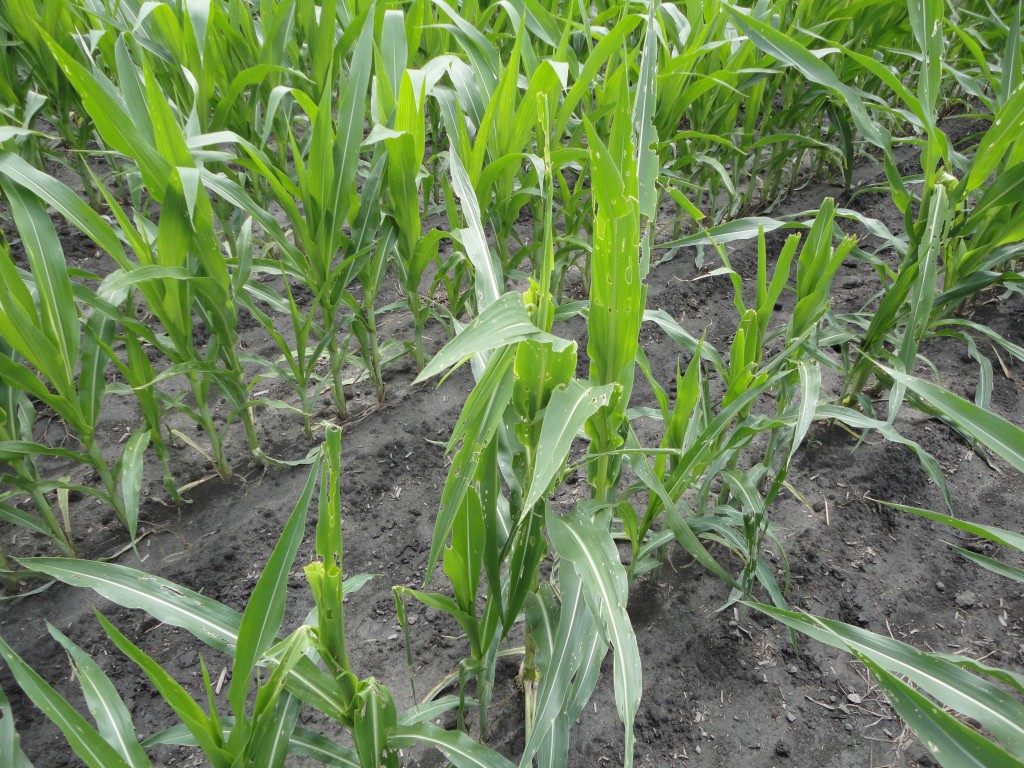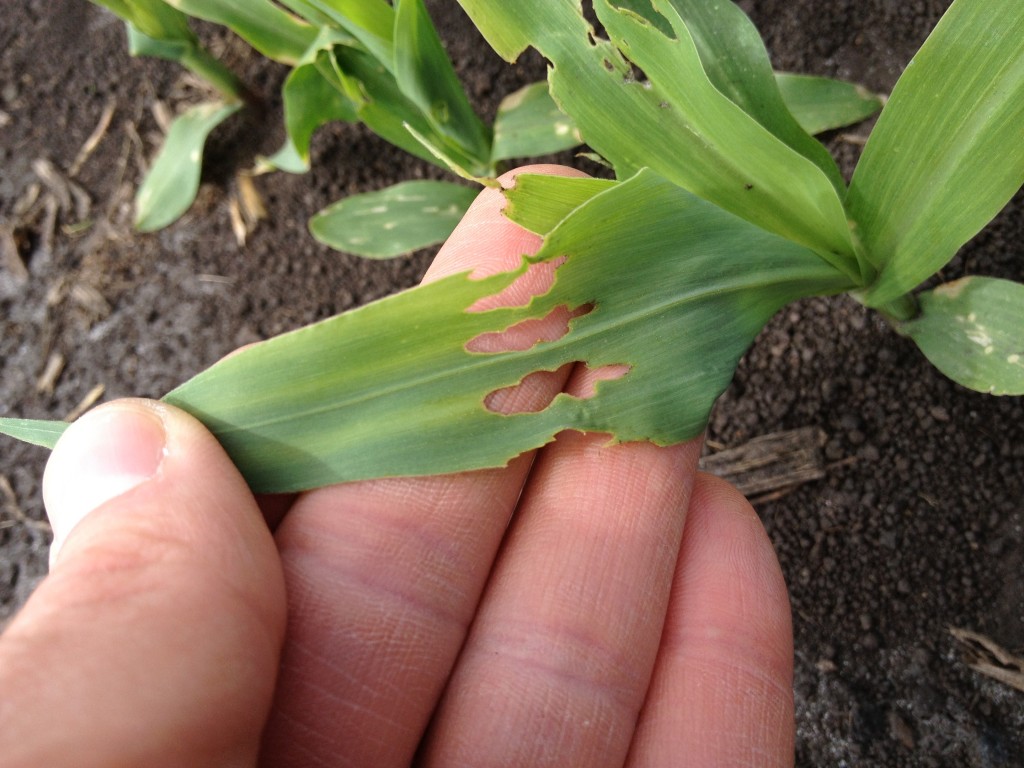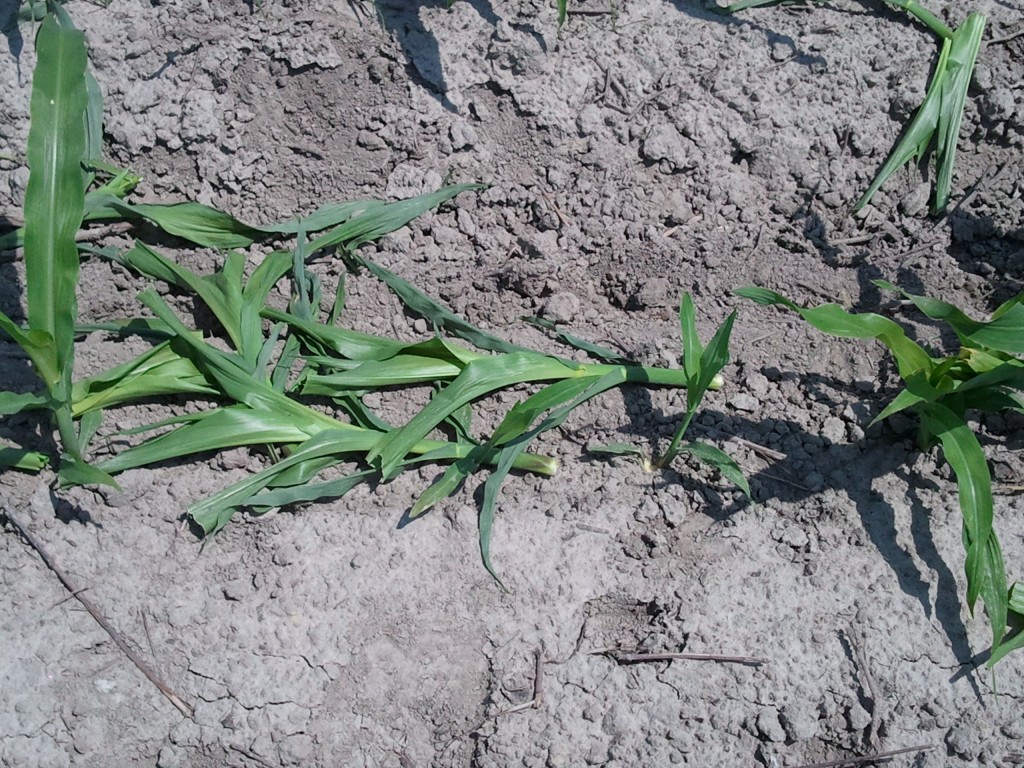Scouting for Seedling Pests
go.ncsu.edu/readext?898522
en Español / em Português
El inglés es el idioma de control de esta página. En la medida en que haya algún conflicto entre la traducción al inglés y la traducción, el inglés prevalece.
Al hacer clic en el enlace de traducción se activa un servicio de traducción gratuito para convertir la página al español. Al igual que con cualquier traducción por Internet, la conversión no es sensible al contexto y puede que no traduzca el texto en su significado original. NC State Extension no garantiza la exactitud del texto traducido. Por favor, tenga en cuenta que algunas aplicaciones y/o servicios pueden no funcionar como se espera cuando se traducen.
Português
Inglês é o idioma de controle desta página. Na medida que haja algum conflito entre o texto original em Inglês e a tradução, o Inglês prevalece.
Ao clicar no link de tradução, um serviço gratuito de tradução será ativado para converter a página para o Português. Como em qualquer tradução pela internet, a conversão não é sensivel ao contexto e pode não ocorrer a tradução para o significado orginal. O serviço de Extensão da Carolina do Norte (NC State Extension) não garante a exatidão do texto traduzido. Por favor, observe que algumas funções ou serviços podem não funcionar como esperado após a tradução.
English
English is the controlling language of this page. To the extent there is any conflict between the English text and the translation, English controls.
Clicking on the translation link activates a free translation service to convert the page to Spanish. As with any Internet translation, the conversion is not context-sensitive and may not translate the text to its original meaning. NC State Extension does not guarantee the accuracy of the translated text. Please note that some applications and/or services may not function as expected when translated.
Collapse ▲Scouting seedling corn on a weekly basis from emergence until plants are about 12 inches tall provides information on insect abundance, stand loss, and plant population. Equipment used for sampling includes a measuring device (e.g. a yard stick) , record form or booklet, pencil, and a digging device (e.g., a hand trowel). Target pests include armyworm, billbug, cutworm, stalk borers and soil insects (wireworm, seed corn maggot, rootworm, etc.).
Sampling Pattern and Procedure. Walk a zigzag pattern over the field looking for insect damaged plants. Damaged plants may be wilted (especially the whorl leaf), discolored, cut-off, or show foliage feeding; a poor stand may also indicate insect damage. When insect damage or poor stands are observed, the insect (or other cause) is identified by digging-up the plant or seed and examining for insect feeding signs. If the problem involves insects, 99 more plants (33 per row for 3 adjacent rows) should be examined in the same area of the field (total of 100 plants); record the number of damaged plants (don’t count plants with only minor feeding as damaged). After taking the first sample, nine additional randomly selected places in the field are sampled by examining 100 plants on three or more rows. After the first sample, digging plants should not be necessary. Take 10 samples per field unless after four (4) samples it is obvious that pests are well above threshold, then sampling can be discontinued. Note that if no insect damage is observed while walking through the field to initiate the first sample, then samples will not be taken.
In fields where billbug are a threat, special attention should be given non-rotated corn fields and to field edges bordering last year’s corn fields. In the case of field edges, it may be necessary to scout an area approximately 150 – 200 feet wide on the edge side of the field as a separate field. In no-till situations, be more aware of foliage and stalk damage from armyworm, cutworm and stalk borer.
In the case of wireworm and other soil insects, there are no remedial treatments but scouting information can be important for future reference, determining the performance of the soil insecticide applied (if one was used), and evaluating plant stand information.
Plant stand estimation is done by counting plants on 10 row feet; 2, 5 foot sections of adjacent row at a minimum of 4 sites and 10 sites maximum. Calculate the average plants per row foot (total plants divided by row feet) and multiple by 17424 (30 inch rows), 14520 (36 inch rows), 13754 (38 inch rows) or 13068 (40 inch rows) to obtain plants per acre. This information can be helpful in determining the importance of further plant loss to insects; for evaluating the performance of planters, seed or chemicals; and for considering replanting.
Feeding Signs and Symptoms of Seedling Insects. Seedling insects can often be identified by the plant damage caused. The following list presents the most common damage symptoms (note that the red text is hyperlinked to a description of the pest):

Armyworm — Leaf tissue will be eaten, usually from the edges inward, and plants will appear ragged. Armyworms are nocturnal and may be found hiding in ground trash and plant cover during bright days.

Billbug — Obscure feeding slits will be on the lower part of the stem, unfurled leaves will often be cut at the base and within the plant, and the central whorl leaf will often be wilted. Rows of holes may appear across emerged leaves and damage will be most severe near field edges, especially when bordering last year’s corn. Billbug adults may be found at the soil surface or on seedling stems at or below the soil surface.

Cutworm — Small plants may be cut entirely off or larger plants may have a large cavity eaten near or slightly below ground level; cut-off plants will frequently be pulled into the ground. Small cutworms will usually feed on the foliage without cutting the plants off. During daylight hours cutworms will be found in the soil, often in holes or under debris and soil clods. Cutworm tunneling in loose soil may be pushed up and resemble miniature mole tunnels (Photo courtesy of John Burleson).
Seed corn maggot– Seedling skips are an indication. Upon digging the seed it may not be sprouted or the sprout had died. The seed will be hollowed out and harbor small white maggots.
Southern corn rootworm — A small, upward penetrating hole will be eaten between main roots at the root crown and a yellowish-white larvae with a brown tail plate may be present.
Stink bug — Injured plants may be wilted, show a bent-over growth, and have rows of holes in the leaves (like billbug). The bugs usually feed on one side of the plant and seedlings may show a wound if feeding has been intense. The interior of the leaf sheaths may show greasy looking spots (stylet marks) where the bugs have penetrated the plant tissue. Injury is most common in no-tillage situations. The bugs may be found feeding on the lower stem.
Stalk borers — Plants will be tunneled or show leaf feeding from within the whorl and the center whorl leaf will often be wilted. Cutting the plants and unrolling the whorl will usually reveal the caterpillar. Only a problem in non-Bt refuge corn.
Webworm — Damage is similar to that caused by cutworm but often only foliage feeding occurs; plants may be cut or tunneled. Look for the presence of a web tunnel adjacent or attached to the plant.

Wireworm — Non-emerged seed found in row skips will have rough holes eaten into them, or seed may be mostly consumed. Dead or dying seedlings show holes eaten into the underground stem, at or above the root crown, and with an upward tunnel. Before dying the central whorl leaf will wilt. Wireworms may be found in the plant or in the soil around newly damaged plants.
Thresholds for Seedling Insect Pests. These thresholds assume a full stand; reduce the threshold by 1/3 if thin stands are encountered.
Armyworm — 20% of small seedlings (to 6 leaf stage) with significant leaf feeding or 70% of plants past the seven 7 leaf stage; armyworms present
Billbugs — 5% seedling loss in infested areas
Cutworms — 10% cut seedlings
Stalk borers — 10% seedlings infested (only a problem in non-Bt refuge corn)
Soil insects (wireworms, rootworm, seed corn maggot) — no threshold (record damage for historical purposes, to evaluate soil insecticide program, and to judge replanting questions)
This page was originally created by John W. Van Duyn Ph D. Emeritus Entomologist, but modified by Dominic Reisig.



